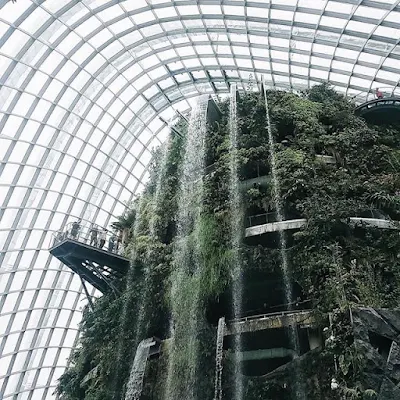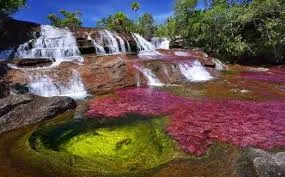Gardens by the Bay is a nature park spanning 101 hectares (250 acres) of reclaimed land in central Singapore, adjacent to the Marina Reservoir. The park consists of three waterfront gardens: Bay South Garden, Bay East Garden and Bay Central Garden. The largest of the gardens is Bay South Garden at 54 hectares (130 acres).
Gardens by the Bay is part of a strategy by the Singapore government to transform Singapore from a "Garden City" to a "City in a Garden". The stated aim is to raise the quality of life by enhancing greenery and flora in the city.
First announced by the Prime Minister, Lee Hsien Loong, at the National Day Rally in 2005, Gardens by the Bay was intended to be Singapore's premier urban outdoor recreation space, and a national icon.
In 2006, an international competition for the design of the park was held, attracting more than 70 entries submitted by 170 firms from 24 countries. Two British firms – Grant Associates and Dominic White were awarded the contracts for the Bay South and Bay East Gardens respectively.
Alongside the lead designers Grant Associates, the design team for Bay South included Wilkinson Eyre, Atelier Ten (environmental design consultants) and Atelier One (structural engineers). They were supported by a number of Singapore firms including CPG Consultants (architecture, civil and structural, mechanical and electrical), Meinhardt Infrastructure (civil and structural), Langdon & Seah (cost consultants) and PM Link (project management). The park is quite popular, with 6.4 million visitors in 2014, and it had its 20 millionth visitor in November 2015


















Bay Central Garden will act as a link between Bay South and Bay East Gardens. It stands at 15 hectares (37 acres) with a 3-kilometre (1.9 mi) waterfront promenade that allows fo r scenic walks stretching from the city center to the east of Singapore. More developments of Bay Central Garden are coming in the next few years.
Bay East Garden
Bay East Garden is 32 hectares
(79 acres) in size and it has a 2-kilometre (1.2 mi) promenade frontage
bordering the Marina Reservoir. An interim park was developed at Bay East
Garden in support of the 2010 Summer Youth Olympics. The first phase of the garden
was opened to the public in October 2011, allowing alternative access to the
Marina Barrage.
It is designed as a series of large tropical leaf-shaped gardens, each with its
own specific landscaping design, character and theme. There will be five water
inlets aligned with the prevailing wind direction, maximizing and extending the
shoreline while allowing wind and water to penetrate the site to help cool
areas of activity around them. Bay East Garden provides visitors with an unobstructed view of the city
skyline. Upcoming developments of Bay East Garden will be based on the theme of
water.
Bay South Garden
Bay South Garden opened to the public on 29 June 2012. It is the largest of the
three gardens at 54 hectares (130 acres) and aims to showcase the best of
tropical horticulture and garden artistry.
The overall concept of its master plan draws inspiration from an orchid as it
is representative of the tropics and of Singapore, being the country's national
flower, the Vanda 'Miss Joaquim'. The orchid takes root at the waterfront
(conservatories), while the leaves (land forms), shoots (paths, roads and link ways) and secondary roots (water, energy and communication lines) then form
an integrated network with blooms (theme gardens and Super trees) at key intersections.
Gardens By The Bay Attractions:
- Flower Dome - Enter a world of perpetual spring, where unique plants bloom.
- Cloud Forest - Step into a realm high in the mountains.
- OCBC Skyway -Take a scenic stroll, 22 metres above ground, in the very heart of nature.
- Super tree Grove - Stand in awe of the amazing Supertrees.
- Far East Organization Children's Garden -Explore the sights and sounds of nature’s playground.
- Bay East Garden -Welcome to a world of serenity at bay east by the waterfront.
- Dragonfly & Kingfisher Lakes -Immerse in the fascinating aquatic ecosystem.
- Heritage Gardens - Bringing the history of singapore to life through the fascinating story of plants.
- World of Plants - Explore a beautiful botanical world that’s intriguing and always full of surprises.
- The Canyon - Come marvel at rocks of wonder at The Canyon.
- Sun Pavilion - Be transported to some of the world’s most dynamic drylands and deserts.
- Art Sculptures -Connecting people with the stories of plants and the world at large.
For More Details = Gardens By The Bay



















































